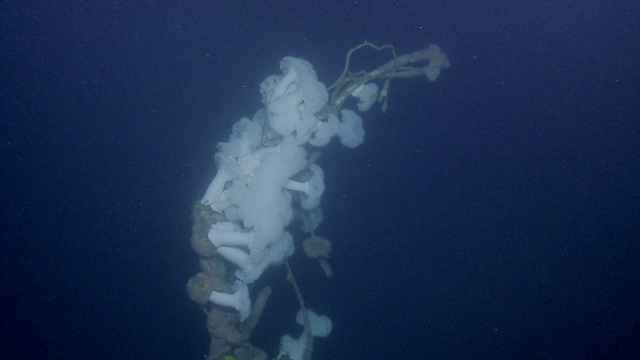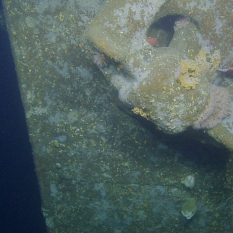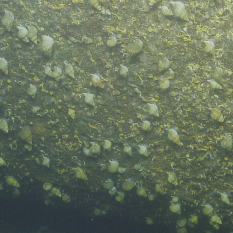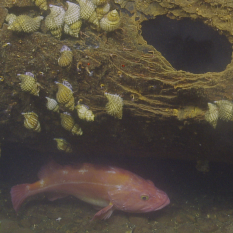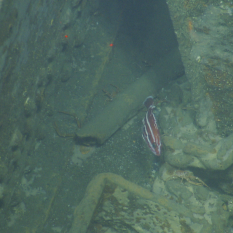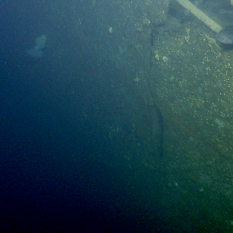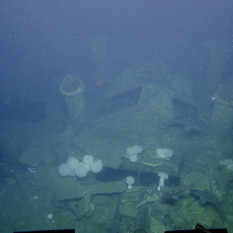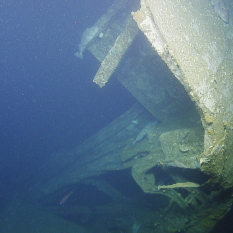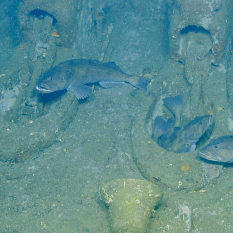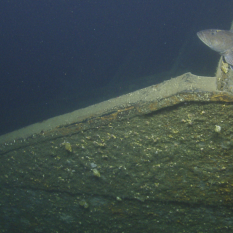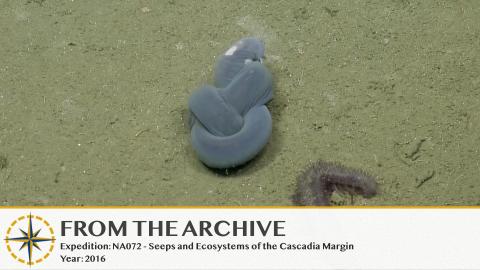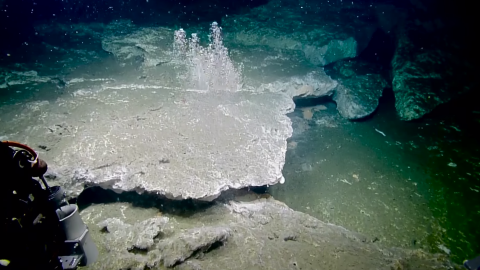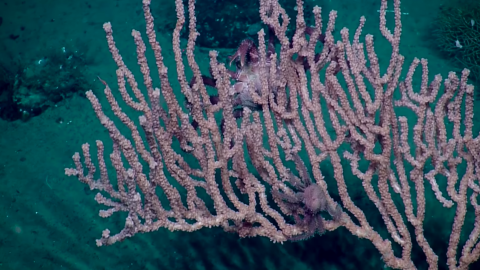From Wreck to Reef: Species Inhabit the Shipwrecked SS Coast Trader
On June 7th, 1942, the merchant vessel SS Coast Trader was hit and sunk by a Japanese submarine torpedo. Seventy-four years later, on June 2nd 2016, a team of ocean scientists and marine archaeologists surveyed the wreck of the ship for the first time using ROVs launched from E/V Nautilus. The wreck was found at 138 meters and as ROV Hercules lit up the remains for the first time, explorers saw that the ROV was not alone. The wreck had become a habitat for dozens of fish and invertebrate species. Hundreds of lingcod and crabs shared the reef-like structure while rockfish darted in and out of rusty crevices. Sea snails crawled across the sponge-encrusted hull while beautiful white plumose anemones billowed off the mast like ghosts of the ship's sails.
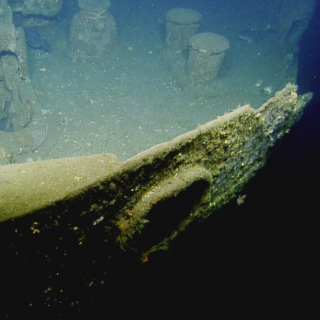
Seeps and Ecosystems of the Cascadia Margin
Methane is a powerful greenhouse gas and an important commercial resource that fuels many elements of our lives on land. Scientists are beginning to understand the complex and varied ways methane fuels life beneath the sea as well. Nautilus will study methane seep habitats along the length of the Cascadia Subduction Zone, from southern British Columbia to northern California.
